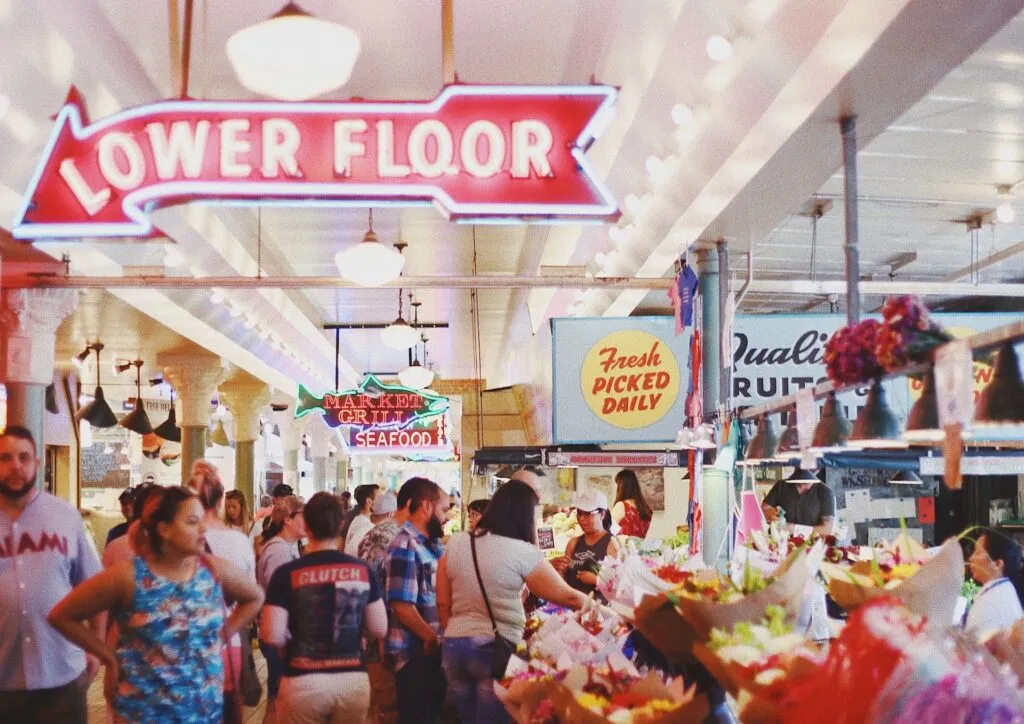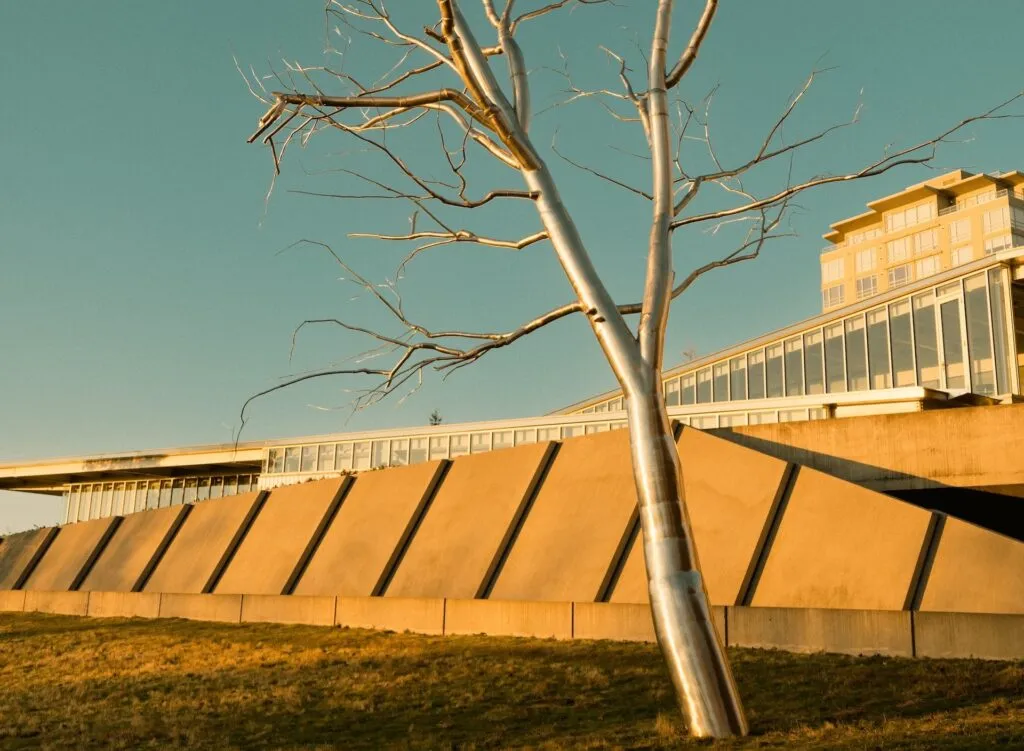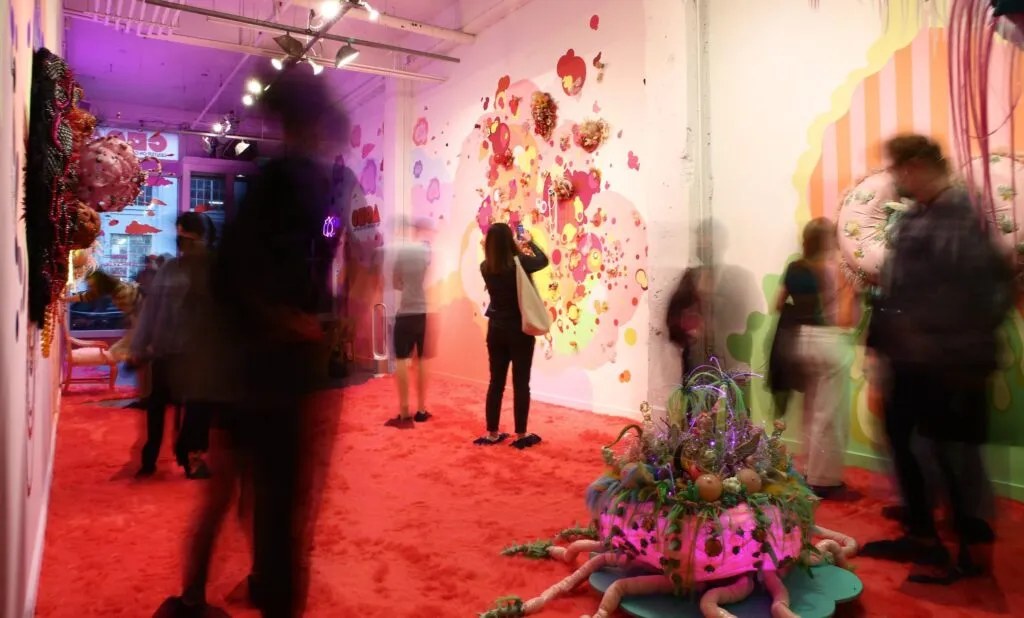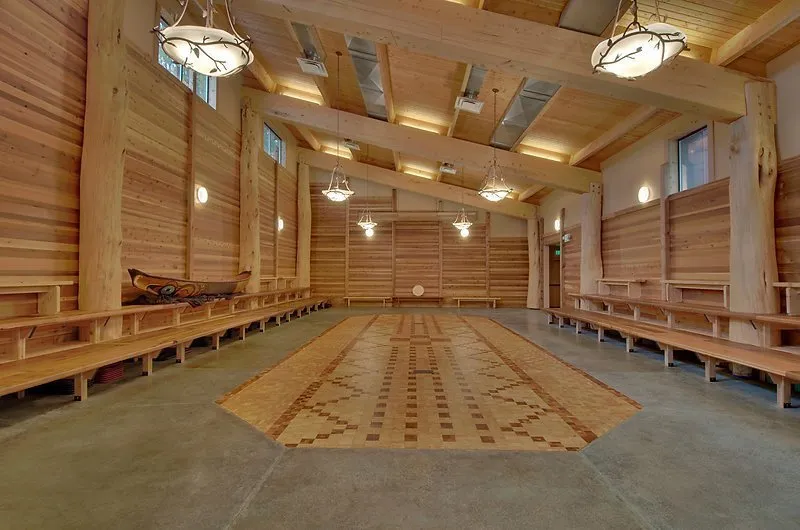Seattle, the Emerald City nestled between Puget Sound and the majestic Cascade Mountains, is renowned not only for its breathtaking natural beauty and distinctive coffee culture but also for its rich and diverse history. From the traces of the indigenous Duwamish people and the Klondike Gold Rush that transformed the city’s landscape to the rise of the aerospace and technology industries, Seattle has witnessed significant historical milestones that have shaped its unique identity today. Join “Du lịch khắp thế gian” (Travel the World) on a journey to explore Seattle’s history, where past and present intertwine, offering meaningful and profound travel experiences.
Volunteer Park: A Historical Witness in the Heart of Seattle
Volunteer Park, located atop Capitol Hill, is not only a green oasis in the bustling urban center but also a silent historical witness of Seattle. Designed by the renowned Olmsted brothers, who also created the legendary Central Park in New York, this park embodies the distinctive landscape architectural style of the 19th century.
Opened in 1887, Volunteer Park was initially named City Park but was later renamed to honor the volunteer soldiers who participated in the Spanish-American War. Stepping into the park, visitors are immediately captivated by the vast green space, winding trails beneath ancient trees, and a tranquil artificial lake. A special highlight of the park is the Volunteer Park Water Tower, an iconic architectural structure built in 1906. Climbing to the top of the tower, visitors can admire a magnificent panoramic view of Seattle, from the sparkling Elliott Bay to the modern city skyline.
Beyond being a public green space, Volunteer Park is also home to the Seattle Asian Art Museum, which houses and displays a rich collection of Asian art, reflecting the cultural exchange between the East and West in Seattle. Strolling through the park, visitors can feel the harmony between nature and history, architecture and culture, creating a relaxing and fascinating space to explore.
Pike Place Market: Where History and Culinary Culture Intersect
Pike Place Market, an indispensable symbol of Seattle, is not just a bustling farmers market but also a living historical landmark, reflecting the community spirit and resilience of Seattleites through various ups and downs. Established in 1907, Pike Place Market was born in response to rising agricultural prices, with local consumers and farmers desiring a direct, fair, and transparent trading venue.
Over more than a century, Pike Place Market has maintained its original core values, serving as a meeting place for farmers, fishermen, artisans, and local residents, creating a vibrant and colorful atmosphere. Walking through the market, visitors will be overwhelmed by the diversity of goods, from fresh seafood, seasonal fruits and vegetables, and vibrant fresh flowers to unique handicrafts. Don’t forget to visit the famous Pike Place Fish Market, where vendors skillfully toss fish, creating an entertaining and captivating performance.
Pike Place Market is not only a shopping destination but also a cultural and historical center of Seattle. Throughout history, the market has witnessed many significant events, from the Great Depression of the 1930s, World War II, to protests and social movements. Today, Pike Place Market continues to develop and innovate, while still preserving its ancient charm and distinctive community spirit, attracting millions of visitors each year to explore and experience.

Discovery Park: Exploring Nature and Military History
Discovery Park, Seattle’s largest urban park, offers a diverse and unspoiled natural space while also concealing unique military historical imprints. Before becoming a public park in 1973, this area was Fort Lawton, a military base built in the late 19th century to protect Seattle from sea attacks.
Fort Lawton was named after Major General Henry Ware Lawton, a hero of the Spanish-American War. Throughout the 20th century, the fort played an important role in training and deploying troops in both World Wars. After the Vietnam War ended, the U.S. military decided to close Fort Lawton, and the area was transferred to the city of Seattle for development into a public park.
Today, Discovery Park still retains many traces of its military past, such as old administrative buildings, officer housing, and defensive structures. However, nature has gradually covered and integrated these imprints, creating a unique space where history and nature harmonize. Visitors can explore forest trails, admire the stunning scenery of Puget Sound, and learn about the area’s military history through information panels and remaining relics. The Intertidal Beach Trail and the Loop Trail are must-visit destinations, offering fascinating nature and history exploration experiences.
Frye Art Museum: An Artistic Journey Through the Centuries
Frye Art Museum, a hidden gem on First Hill, is an ideal destination for art and history enthusiasts. Founded by Charles and Emma Frye, wealthy art collectors, this museum has been open to the public for free since 1952, offering an artistic journey spanning centuries.
The core collection of the Frye Art Museum focuses on European and American paintings and sculptures from the 19th and 20th centuries, especially works from the realist and expressionist movements. Visitors can admire works by masters such as Franz von Stuck, Max Liebermann, and Lovis Corinth, as well as famous American artists like Winslow Homer and Edward Hopper.
In addition to its permanent collection, the Frye Art Museum also organizes diverse special exhibitions, showcasing contemporary artworks and different cultures around the world. The museum also actively hosts educational programs and cultural events, such as lectures, workshops, music performances, and film screenings, creating a vibrant space for art exchange and learning.
Frye Art Museum, showcasing an impressive collection of 19th- and 20th-century German and American art, is open free to everyone.
Olympic Sculpture Park: Contemporary Art and Historical Vision
Olympic Sculpture Park, a unique outdoor art space on the shores of Elliott Bay, is not only a place to display impressive contemporary sculptures but also offers a historical vision of Seattle’s development. Before becoming a sculpture park in 2007, this area was a polluted industrial site, with oil refineries and old piers.
The transformation of a derelict industrial area into a sculpture park is a testament to Seattle’s urban change and regeneration. Olympic Sculpture Park not only cleaned up the polluted environment but also created a green public space where residents and visitors can enjoy art and nature.
The highlight of the park is its diverse collection of contemporary sculptures, with works by renowned artists such as Alexander Calder, Louise Bourgeois, and Richard Serra. The sculptures are harmoniously arranged in the park space, interacting with the surrounding natural landscape, creating unique visual experiences. From the park, visitors can admire panoramic views of Elliott Bay, the majestic Olympic Mountains, and the historic Pier 70, once a major trading hub of Seattle.

Center for Wooden Boats: Preserving Seattle’s Maritime Heritage
The Center for Wooden Boats, located on the shores of Lake Union, is a living museum and a traditional boatyard, preserving and honoring Seattle’s rich maritime heritage. Seattle, with its special geographical location by the sea and dense network of rivers and lakes, has a long maritime history closely linked to the city’s development.
The Center for Wooden Boats was established in 1976 with the aim of preserving and disseminating the traditional art of wooden boat building, a handicraft skill that is gradually fading in the industrial age. At the center, visitors can admire a diverse collection of wooden boats, from indigenous kayaks and classic sailboats to luxury motorboats. The center also organizes boat building classes, sailing lessons, and hands-on experience activities, helping visitors better understand boat building techniques and maritime culture.
In addition, the Center for Wooden Boats also hosts free programs, such as boat parades, maritime cultural events, and guided tours, creating opportunities for everyone to access and discover Seattle’s maritime heritage. Visiting the Center for Wooden Boats, visitors will be immersed in the romantic space of wooden boats, listen to stories about the sea and talented boat builders, and feel the spirit of adventure and exploration of Seattleites.

Duwamish Longhouse and Cultural Center: Learning About Seattle’s Indigenous History
The Duwamish Longhouse and Cultural Center, located on the ancestral land of the Duwamish people, is an important cultural and historical site where visitors can learn about the history and culture of Seattle’s indigenous people. The Duwamish are the Native American tribe who have lived in the Seattle area for thousands of years before European arrival.
The Duwamish Longhouse Cultural Center was built in 2009, as an effort by the Duwamish tribe to preserve and revitalize their culture, language, and traditions. The longhouse is a traditional architectural structure of the Pacific Northwest indigenous people, used as a communal dwelling, community center, and venue for ceremonies and festivals.
At the Duwamish Longhouse Cultural Center, visitors can explore exhibits on the history, culture, and art of the Duwamish people, learn about their traditional way of life, and discover the challenges this tribe has faced throughout history. The center also hosts cultural events, such as traditional music and dance performances, language and craft classes, creating opportunities for exchange and learning between indigenous people and visitors.

Klondike Gold Rush National Historical Park – Seattle Unit: Imprints of the Gold Rush
The Klondike Gold Rush National Historical Park – Seattle Unit, located in the historic Pioneer Square district, is a fascinating destination for those who want to learn about the legendary Klondike Gold Rush and Seattle’s important role in this historical event. The Klondike Gold Rush, which took place in the late 19th century, attracted thousands of people from around the world to flock to the Yukon region of Canada in search of fortune.
Seattle, with its favorable geographical location and developed infrastructure, became the main gateway and logistics center for the Klondike Gold Rush. The city provided everything needed for gold miners, from equipment and food to transportation and financial services. The Klondike Gold Rush brought prosperity and rapid development to Seattle, transforming it from a small town into a major economic and commercial center of the Pacific Northwest region.
The Klondike Gold Rush museum recreates the vibrant and adventurous atmosphere of the gold rush, through interactive exhibits, historical artifacts, and stories about gold miners and Seattleites who contributed to this event. Visitors can explore replicas of shops and offices from the gold rush era, learn about the difficult and dangerous lives of gold miners, and feel the ambitious and fortune-seeking spirit of humanity.
Center on Contemporary Art (CoCA): Reflecting Contemporary Art and History
The Center on Contemporary Art (CoCA), a pioneering art space in Seattle, is a place to explore the intersection of art, performance, and technology, while reflecting contemporary social and historical issues. CoCA was founded in 1981 by a group of artists and cultural activists, with the aim of creating an independent art platform, encouraging creativity and experimentation, and promoting dialogue on social issues.
CoCA does not have a permanent collection but focuses on organizing temporary exhibitions, art performances, community projects, and educational programs, showcasing diverse contemporary artworks, from painting, sculpture, photography, video, to installation art, performance art, and digital art. CoCA always encourages artists to explore new boundaries of art, experiment with creative forms of expression, and reflect on pressing issues of contemporary society, such as climate change, social inequality, and human rights.

Conclusion
The journey to explore Seattle’s history is not just about visiting landmarks and museums, but also a profound experience of the culture, people, and spirit of this city. From green parks bearing the marks of 19th-century landscape architecture, the bustling and colorful Pike Place Market, to unique art and history museums, Seattle offers a diverse and rich travel journey, catering to all tastes and interests of visitors. Come to Seattle and discover for yourself the heroic pages of history and distinctive cultural stories, to feel the timeless beauty of this Emerald City.